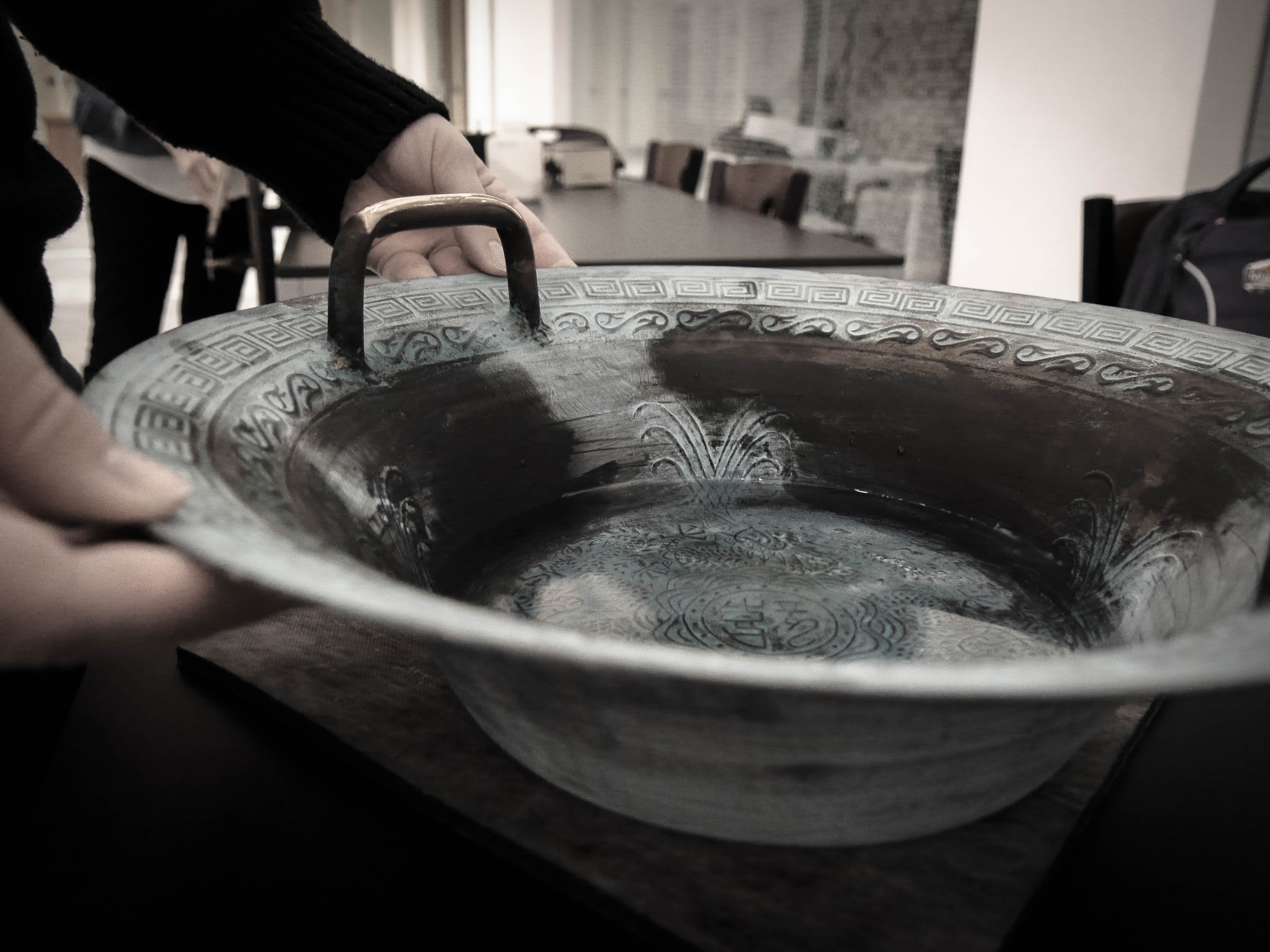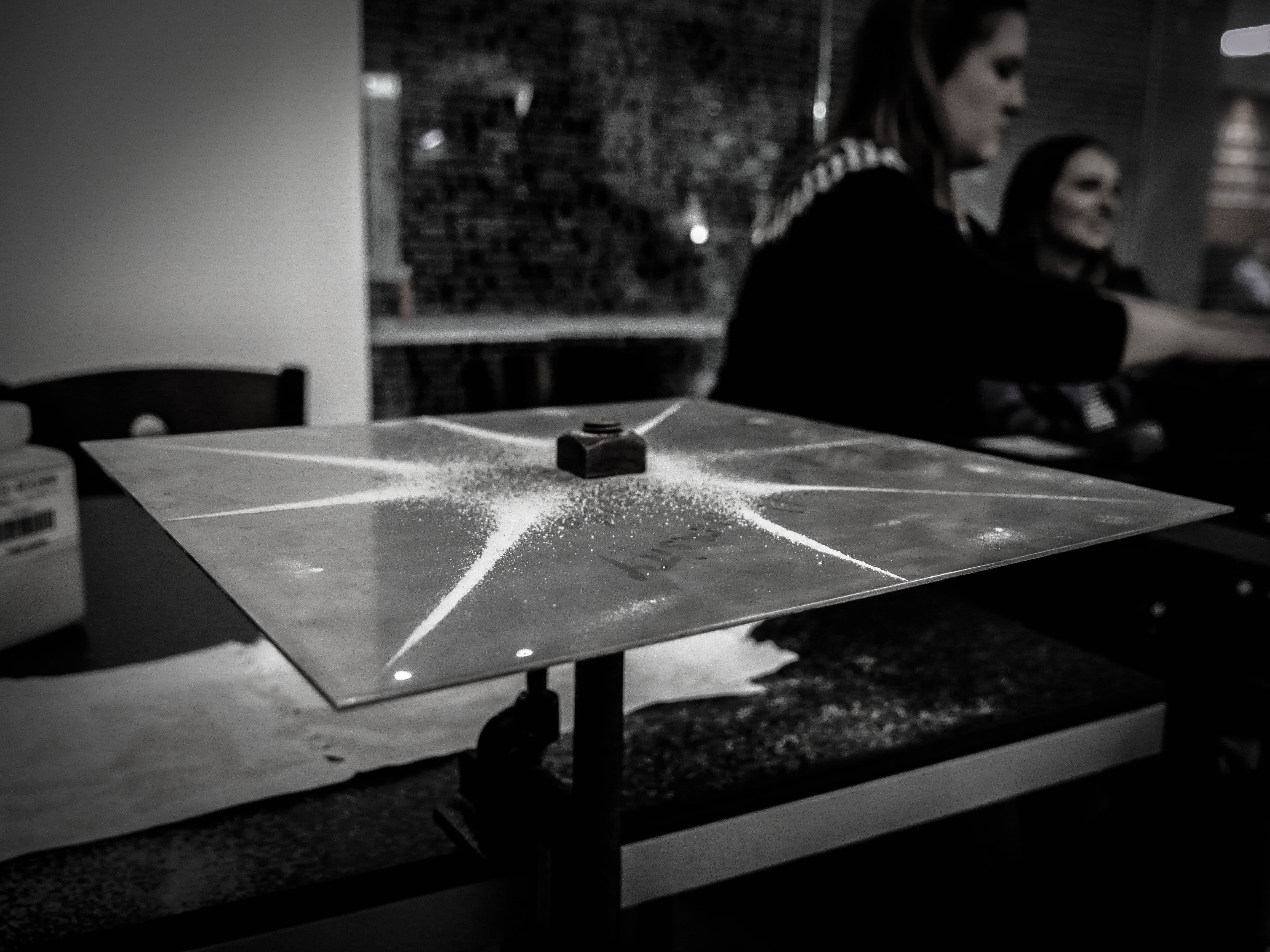Hear We Go!
The AUF 6 would like to extend a special thanks to Professor Jaeger of the physics department for supplying us with the objects for this installation!
In American culture, hearing is one of our most highly prized senses. We have been conditioned to rely on hearing to engage with other people. It is also the sense that allows us to enjoy music, one of the greatest forms of expression in the world. But if we hear sound, can we feel it too? Can we see it? Based on our latest installation, the answer is yes.

All of the objects in this installation showcased the multi-sensory aspect of sound. Some of them were quite unique, objects that most people do not encounter on a daily basis. Have you ever heard (no pun intended) of a space phone? Neither had we. It is actually two cylindrical objects with cone shaped ends that are connected by a slinky-like spiral. The sound produced by the space phone is rather unexpected and mysterious, living up to its space-themed name. There was also the Zube Tube: the ultimate cosmic sound machine, which—shout out to fans of Star Wars—sounds a lot like a lightsaber.
Another object, which I dubbed “Wall E” after failing to discover its proper name, is an electromagnet with a rotating wheel of crisscrossed metal strips at different lengths. Changing the frequency and amplitude on the electromagnet prompts the corresponding strip to vibrate while the others remain still. Across the table sat two wooden blocks with medal forks attached to each. When the blocks are pushed together, using a mallet on the side of one will transfer the ringing vibration to the other, even if the blocks are suddenly pulled apart.
“…the sound just permeates you in a very meditative way.”
-One student’s thoughts on the Tibetan water bowl

The Tibetan water bowl in particular generated a lot of interest. Touching the edges of the bowl creates a vibration in the water, which contorts into intricate designs and sometimes jumps high into the air. It’s completely mesmerizing! A different object comprised of a steel square with a small sample of sand placed on top illustrated a similar effect when a bow was used to “play” it. The sand, manipulated by the resulting vibration, also forms patterns.
“Each unique sound also has its own unique visual representation..”
Together, these objects helped convey our message about how sound is not exclusive to hearing. As we continue to delve further into our study of the senses, we find sensory interaction in nearly everything we do. So here’s to hearing and another successful instillation!
Until next time,
Cecilia, Grace, Jessie, Magda, Marla, and Nicole
